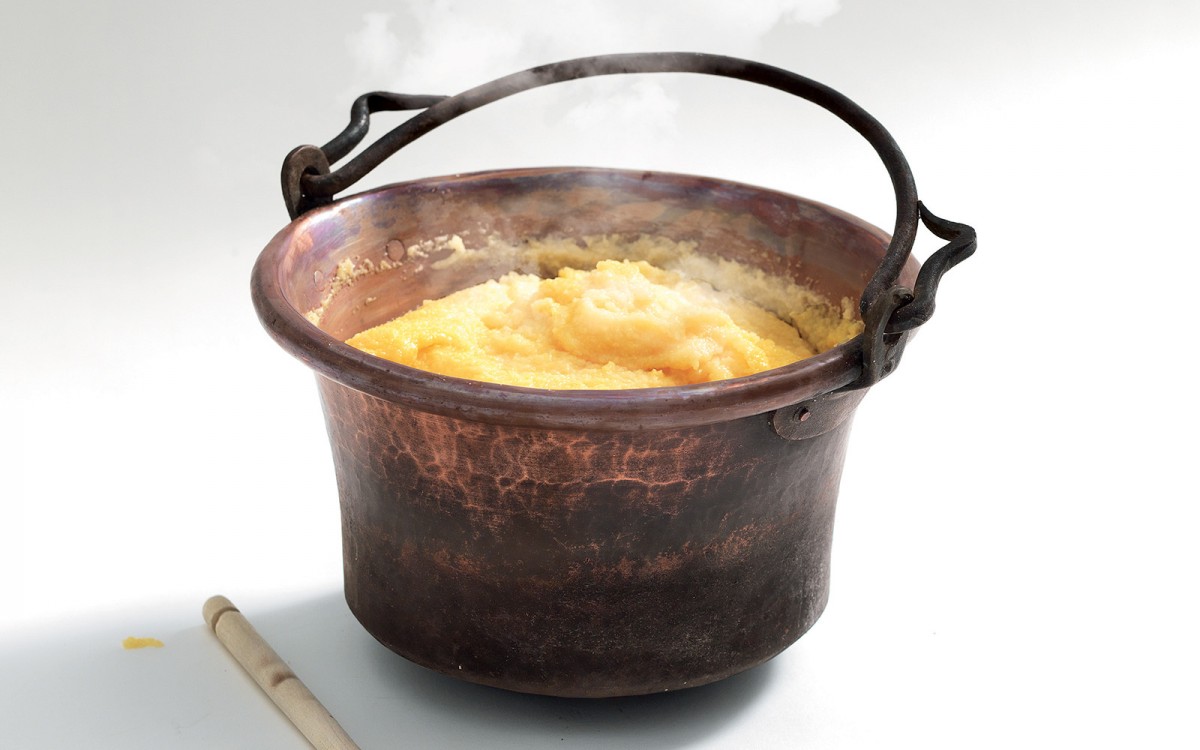Glossary
What Is
This term is primarily used to indicate a cornmeal mixture, although these days there are polentas made with other flours, such as chestnut or buckwheat flour. The main feature of polenta is its versatility, as it can be paired with many flavors, whether meat, fish or vegetables. There are pre-made polentas on the market that are sold vacuum-packed, and there are parboiled cornmeals used to make quick polenta.
How To
Beginning with traditional polenta, there are recipes that involve mixing in other ingredients after cooking the polenta, and some involve cooking the polenta first and then cooking it a second time with other ingredients. The characteristics of polenta vary, depending on the amount of water used and the cooking time, from being rather soft to quite firm. The size of the grains used also differentiates one polenta from another. Polenta from Bergamo, for example, is made with a coarse grind of cornmeal and requires longer cooking. Friulian polenta has a finer texture, polenta from Veneto uses white corn, and in Tuscany and Abruzzo the polenta is very fine and soft.
Italian Tradition
Polenta purists believe that the best kind is made with a mixture of 4/5 corn meal and 1/5 buckwheat flour, and polenta taragna is made with 2/3 buckwheat flour and 1/3 cornmeal. The taragna variety is typical of Valtellina, where it is served with a special local cheese called Casera. In the Aosta Valley you can try polenta concia made with corn meal and fontina, a typical cheese of the valley. Another cheese that goes wonderfully with polenta is gorgonzola, which is melted between two slices. In Veneto, polenta is brought to the table with codfish, and in Lombardy it used to be the custom to accompany freshly made polenta with warm milk for a simple and filling dinner.
How To Keep It Fresh
Once prepared, polenta can be kept in the refrigerator for a couple of days wrapped in aluminum foil and kept in a container.
Get fresh Italian recipes and food news every day!
Subscribe to our newsletters:

